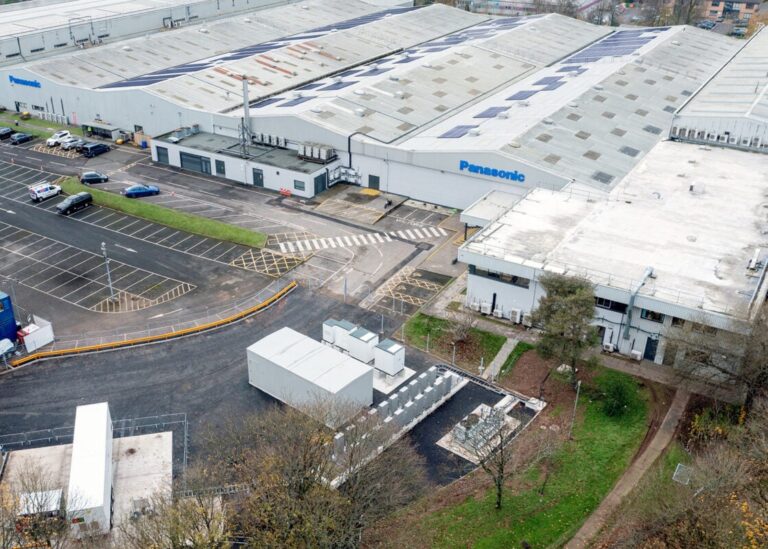Japanese electronics manufacturer Panasonic will power its UK manufacturing facility in Cardiff through the integrated control of three types of energy sources: pure hydrogen fuel cell generators, photovoltaic generators and batteries.
Panasonic announced on December 3 that it had completed installation and begun testing a distributed power generation system consisting of 372 kW of solar PV, 1 MWh of battery storage and 21 units of 5 kW hydrogen fuel cell generators, with a combined capacity of 105 kW.
In November 2023, the company first announced it would renovate the Wales site, allocating around €130 million (£113 million) over two years following launch. Panasonic said the main aim of the renovation was to demonstrate that the site, used for the production of microwave ovens and small appliances, could be fully powered by renewable sources.
An energy management system (EMS) that tracks changes in electricity demand and weather conditions will become operational at the end of March 2025 and provide the plant with a stable supply of renewable energy. Panasonic says it will only generate and store the amount of electricity needed on site.
The hydrogen fuel cell generators are also optimized for the amount of energy used in the factory. Last year, a 760 kW solar energy generation system was installed on the roof of the factory. Some of this generation will be used in the new energy system, which will also integrate newly installed battery storage.
Through the operation of the demonstration system, the company says it will also seek to build relationships with local partner companies and corporate customers related to the hydrogen sector to establish a business foundation.
Masahiro Shinada, president and CEO of Panasonic Corporation, said: “It is our sincere hope that this facility can be used as a showcase to foster diverse partnerships, accelerate innovation through the combination of technologies, and contribute to the development of British hydrogen technology. related industry.
“I hope that in ten or even twenty years, this facility will be seen as a birthplace of innovation – where we helped build a hydrogen society and laid the foundation for a zero-carbon future.”


